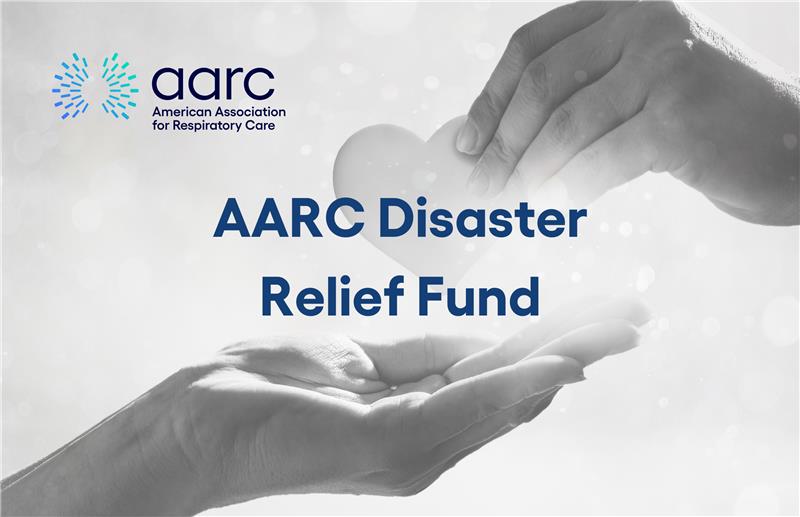
By Debbie Bunch
May 1, 2025
Cynthia Keely, BA, RRT, LRTR, an AARC member from West Virginia and the West Virginia Society for Respiratory Care representative to the AARC House of Delegates, was working at a home improvement store during college when she had a customer come in wearing scrubs.
“I had been attending a few years of college but was unhappy with the path and the major I had chosen,” she recalled. “I knew I wanted to switch to a medical program, and had looked into a local college program, but couldn’t get in for another year at the earliest.”
The young woman appeared to be a student, so she decided to ask her which path she had taken. “I asked her what school and program she was attending — she said she was in the Carver Career Center’s respiratory therapy program and suggested I apply for the upcoming class,” said Keely.
The rest, she says, is history.
Racking up experience
Keely enrolled in the program and soon learned just how lucrative her new profession was going to be. As soon as she finished the technician’s 100-level course, the local hospital hired her to start caring for patients.
She would go on to work primarily in acute care hospitals, as well as local skilled nursing facilities, with which two hospitals in her area had contacts to provide respiratory care services to residents.
Keely credits her experience in the acute care arena with improving her application of knowledge and critical thinking skills. Her time in the SNFs taught her how to work with other disciplines, including physical and occupational therapists, case managers, the nursing director, and even billing personnel.
“This experience gave me an appreciation of these specialists and I believe helped me become a better therapist,” she said.
Life stepped in
While Keely didn’t plan to leave traditional respiratory care, life stepped in with an opportunity she couldn’t refuse when an RT coworker who had gone to work as the manager of the West Virginia Asthma Education and Prevention Program, asked if she’d be interested in the coordinator position there.
“I was initially hesitant, but after some careful consideration, I decided to take a leap of faith to try something new and called her back to apply for the position,” she said.
She got the job, and within six months, her friend who had the manager’s position left the program, and Keely was promoted to manager. She wrote her first competitive grant application for CDC funding and then spent the next six years as the WV asthma program manager, all while still working part-time at the hospital.
In 2013, the program was in its fifth year of a five-year grant and was facing challenges stemming from changes in leadership at the Bureau for Public Health and the chronic disease division that the program fell under.
Program staff were not optimistic that the asthma program would be able to continue, and one by one began looking for other jobs. Keely had another friend who had recently started working for the American Heart Association (AHA) and told her about a new position opening up there, suggesting she apply.
Mission: Lifeline
Once again, a friend’s recommendation paid off. Keely joined the AHA as the Mission: Lifeline director for the state of West Virginia, a three-year, grant-funded position aimed at improving STEMI care in the state.
“As an RRT who had worked at the largest heart center in the southern part of the state for nearly 14 years, I was very aware of STEMI, having worked together with the cardiologists and the cardiothoracic surgeons along with others in the care for those patients,” said Keely. “This knowledge, as well as grant writing and implementation and grant fiscal management experience, was a requirement for this first position.”
Over the three years of the contract, she oversaw seven grants from five foundations. The AHA was so pleased with her work that, when the contract ended, the local AHA executive director and several of the volunteers she had been working with recommended that the AHA retain her full-time.
She was tapped to serve as the first Quality and Systems Improvement (QSI) manager based in West Virginia and began overseeing all AHA quality improvement programs in the state. These ranged from stroke, heart failure, and atrial fibrillation to STEMI/NSTEMI and cardiac resuscitation. She was also responsible for certifications and accreditations offered by the AHA.
11 years and counting
When the pandemic hit in 2020, the AHA underwent a massive reorganization, and staff members embraced the digital age, using Zoom and similar communication tools to meet with customers, hospitals, and volunteers. The territory for each QI program consultant was expanded, and QSI managers became quality improvement program consultants — the title Keely holds today.
Keely recently celebrated her 11th anniversary at the AHA and says she is thankful she “threw caution to the wind and left the bedside” when she did. While there are plenty of challenges on the job — working late into the night completing deliverables for a CDC grant or the AHA foundations, for example — she wouldn’t trade it for anything.
“My colleagues at AHA are the absolute best — I couldn’t ask for a better group of people to work with,” said Keely. She appreciates the opportunity the job gives her to touch so many people and improve so many lives, not just in West Virginia, but throughout the country and even internationally as the AHA expands its influence abroad.
Good life advice
Cynthia Keely has this life advice for her colleagues in the profession:
- Don’t take yourself too seriously. You’re always replaceable.
- Take care of yourself. Be sure to make time to spend with family, with friends, and on the things you want to do.
- Get involved and stay involved with your state respiratory care society and the AARC.
- Don’t limit yourself. Keep learning (it can and should be beyond respiratory) and network at conferences and events to expand your connections. These activities will lead you to your next job opportunity.








